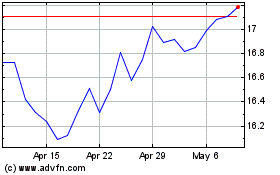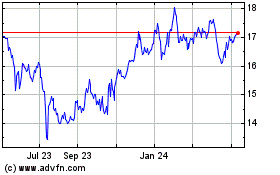By James R. Hagerty
Robert E. Allen announced wave after wave of job cuts when he
was chief executive of AT&T Corp. from 1988 to 1997. He spent
billions of dollars on a doomed effort to diversify the phone
company into computers. He failed to arrange for a smooth
succession as his retirement neared.
Yet some former colleagues say Mr. Allen did well amid extremely
difficult circumstances. He took charge just four years after
AT&T lost its monopoly of the U.S. phone market, and the
company was still learning to compete. A revolution in electronics
was merging the worlds of computers and communications equipment.
No one knew how much cellphones and the internet would change the
world.
"He had to find his way through uncharted territory," said
Michael Sovern, a former president of Columbia University who was
on AT&T's board.
Mr. Allen admitted he made some errors. "If everything we did
was absolutely perfect or correct, maybe we'd be given another name
and be called God or something," he told The Wall Street Journal in
1996.
Mr. Allen died Sept 10 of complications from a stroke. He was
81.
"He did not come on as a big robust personality," said Harold
Burlingame, who headed human resources under Mr. Allen. "He came on
as a quiet, thoughtful person."
Some found him remote. "I just can't be warm and fuzzy with
everybody all the time," he said. He presided over more than
100,000 job cuts as the former monopoly, known as Ma Bell, slimmed
down and automated. In 1996, after announcing yet another round of
cuts, AT&T bought full-page newspaper ads, signed by Mr. Allen,
urging others to hire its former employees, "among the best trained
anywhere."
Robert Eugene Allen was born Jan. 25, 1935, and grew up in the
small town of New Castle, Ind. His father ran a children's clothing
store and his mother was a teacher. He married the former Elizabeth
Pfeffer while pursuing a political science degree at Wabash College
in Crawfordsville, Ind. (The school motto was: "The student is
expected to conduct himself at all times, both on and off campus,
as a gentleman and a responsible citizen." Mr. Allen often said
that was all the direction he needed.) He and his wife moved into a
$27.50-a-month Quonset hut in a swampy neighborhood called Mud
Hollow.
After graduating, he got a management trainee job at Indiana
Bell, the local unit of AT&T, where he learned how to operate a
switchboard. Cautious and methodical, he ascended the ranks,
becoming chief financial officer of AT&T in mid-1983 and
president in 1986. That made him No. 2 to his mentor, James Olson,
the chairman and CEO. Less than two years later, Mr. Olson died of
cancer, and Mr. Allen took over.
He was determined to expand in computers. AT&T had invented
the transistor and created the Unix computer operating system. It
knew a lot about computers; it just didn't know how to make money
from them. As phone and data services converged, AT&T feared
computer makers would take over telecommunications -- unless it
could fight them on their turf.
AT&T invested in computer makers Ing. C. Olivetti & Co.
and Sun Microsystems Inc. It won a $100 million order to sell
computers and related gear to American Airlines. But AT&T's
computer business kept piling up losses. Some executives wanted to
ditch it.
Mr. Allen kept trying. In 1991, AT&T bought NCR Corp., the
former National Cash Register, which had evolved into a maker of
automated teller machines and computers, for $7.4 billion.
Mr. Allen hoped NCR would give AT&T critical mass in
computers. But NCR was struggling itself to stand out in the
overcrowded computer market. Combining two laggards didn't create a
winner.
Mr. Allen got more kudos for thrusting AT&T into the
cellphone business with the 1993 acquisition of McCaw Cellular
Communications Co., though some critics said he should have moved
faster in that direction.
In 1995, Mr. Allen announced a surprise plan to spin off the
telecom equipment business, which became Lucent Technologies Inc.,
and the computer arm, which reverted to the old NCR name.
For Mr. Allen, it was time to find a successor. He persuaded the
board that the best bet was John Walter, recruited in 1996 from a
printing company, R.R. Donnelley & Sons, with a $5 million
signing bonus. Within months, Mr. Allen had a change of heart: He
told the board that Mr. Walter wouldn't make a great CEO after
all.
The board began losing confidence in Mr. Allen. In 1997, it
recruited another outsider, W. Michael Armstrong, as CEO and sent
Mr. Allen into retirement at age 62.
AT&T's struggles continued. Profits from long-distance calls
plunged, and a strategy of buying cable TV networks was a costly
flop. In 2005, a humbled AT&T agreed to be taken over by SBC
Communications, one of the regional phone companies that had split
off from Ma Bell in 1984. SBC decided to change its name to
AT&T Inc.
Edward Whitacre Jr., the former chairman of SBC who led the
takeover, described Mr. Allen as "a classy guy" and said he had
done his best to navigate through a treacherous era. "Those were
difficult times to know what to do," Mr. Whitacre said.
Mr. Allen's retirement left more time for golf, a lifelong
passion. He split his time between homes in Village of Golf, Fla.,
and Convent Station, N.J. He is survived by his wife of 60 years,
Betty, four children, 11 grandchildren and two great
grandchildren.
Write to James R. Hagerty at bob.hagerty@wsj.com
(END) Dow Jones Newswires
September 16, 2016 12:59 ET (16:59 GMT)
Copyright (c) 2016 Dow Jones & Company, Inc.
AT&T (NYSE:T)
Historical Stock Chart
From Mar 2024 to Apr 2024

AT&T (NYSE:T)
Historical Stock Chart
From Apr 2023 to Apr 2024
